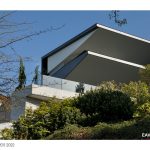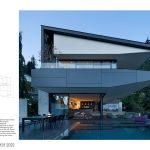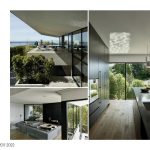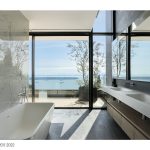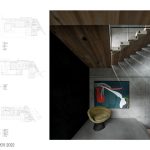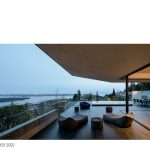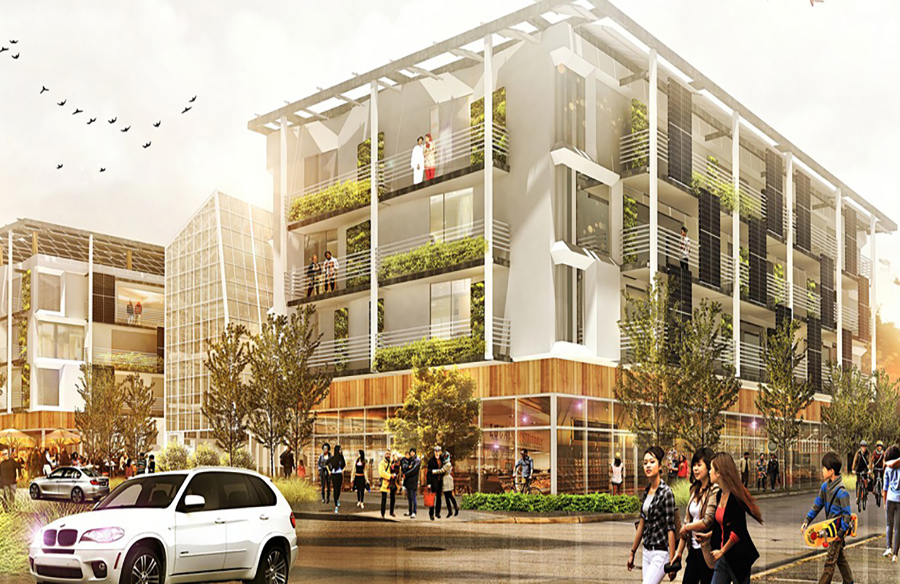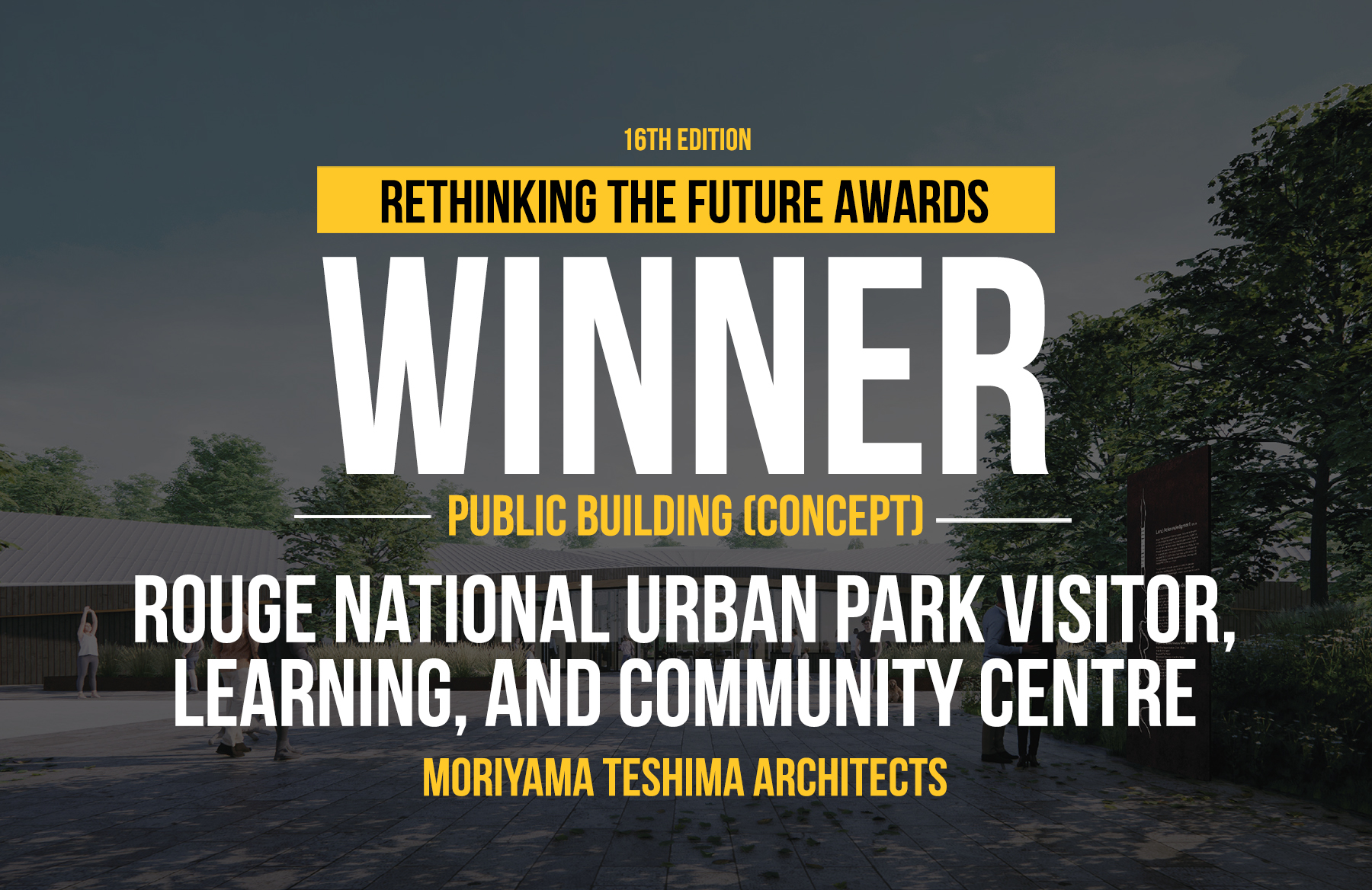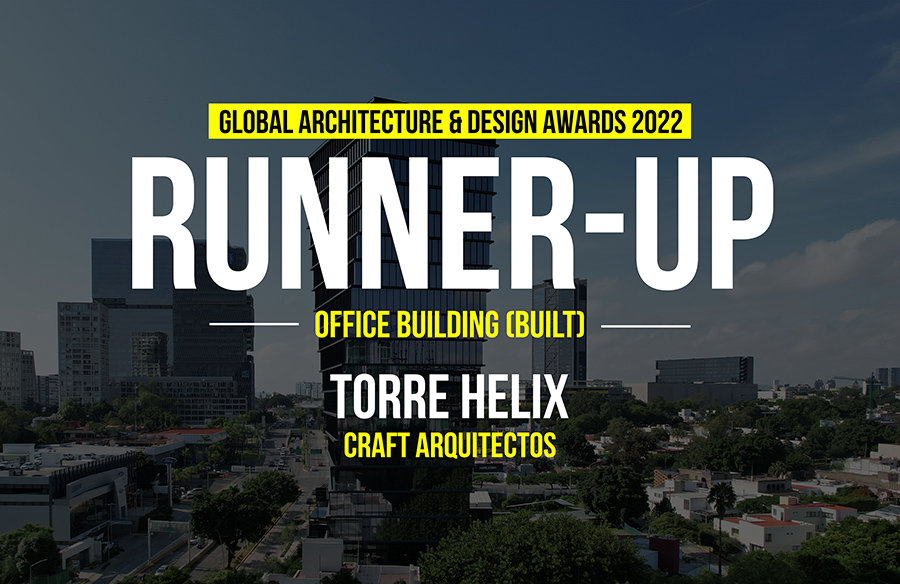The Eaves House exists at the interface between a residential neighbourhood below and an un-developed forested ravine above. The long and narrow cross-pitched site is asymmetrical with a pan-handle shape. Views to English Bay, the Vancouver skyline, and the Stanley Park peninsula are spread across the horizon to the south and south-east. Neighbourhood development in this area is regulated by specific design guidelines that encourage roof forms rather than strong volu-metric expression.
Architecture, Construction & Design Awards 2022
First Award | Private Residence (Large) (Built)
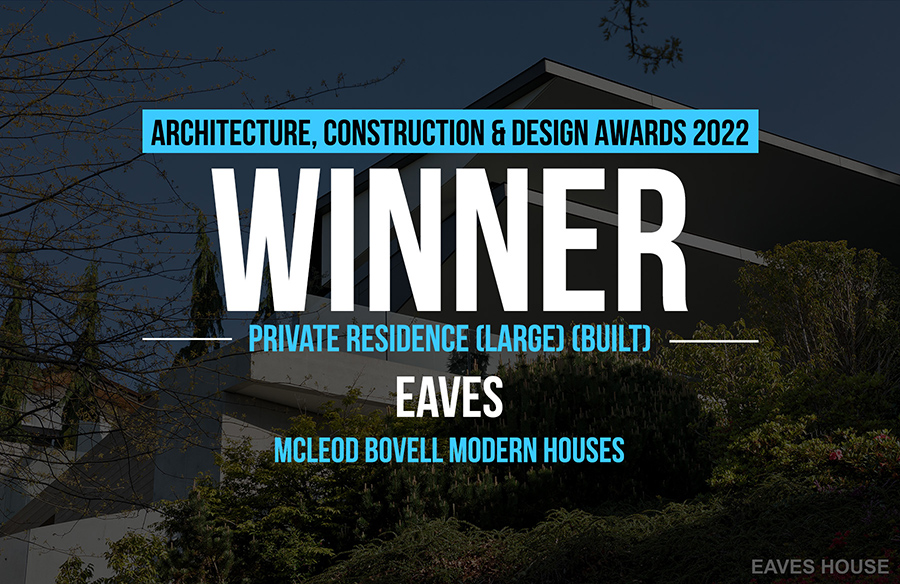
| Project Details | |
| Project Name: | Eaves House |
| Project Category: | Private Residence (Large) (Built) |
| Studio Name: | Mcleod Bovell Modern Houses |
| Design Team: | Matthew Mcleod, Lisa Bovell, Thomas Yuan, Alisha Maloney |
| Area: | 8085 sq.ft |
| Year: | 2021 |
| Location: | West Vancouver, British Columbia, Canada |
| Consultants: | Ennova Structural Engineers, Phillips & Associates Engineering Ltd., 4 Valleys Ltd., Grewal & Associates, Postle Construction |
| Photography Credits: | Ema Peter |
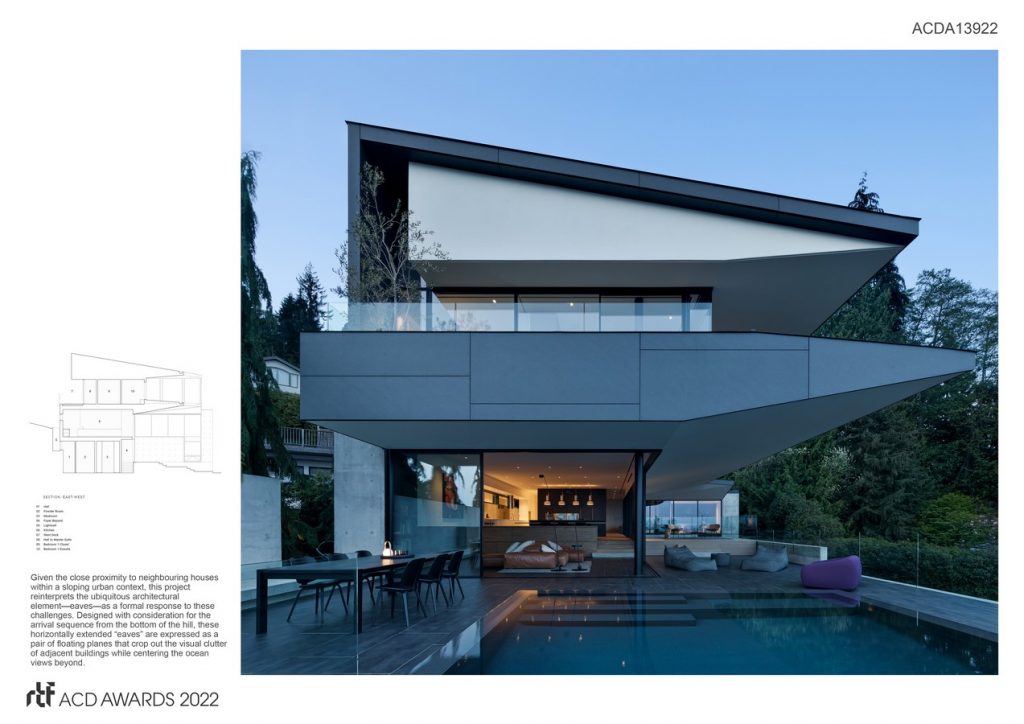
©Ema Peter
The house is formally comprised of a hovering concrete plinth at the main floor which sits underneath two broad eaves. The plinth forms a new “ground” in the air which obscures a large auto-court at the basement floor and creates privacy by masking the road and windows of adjacent houses below. The two extruded roof masses above similarly serve to edit out the sub-urban foreground while framing and focusing vistas toward the water.
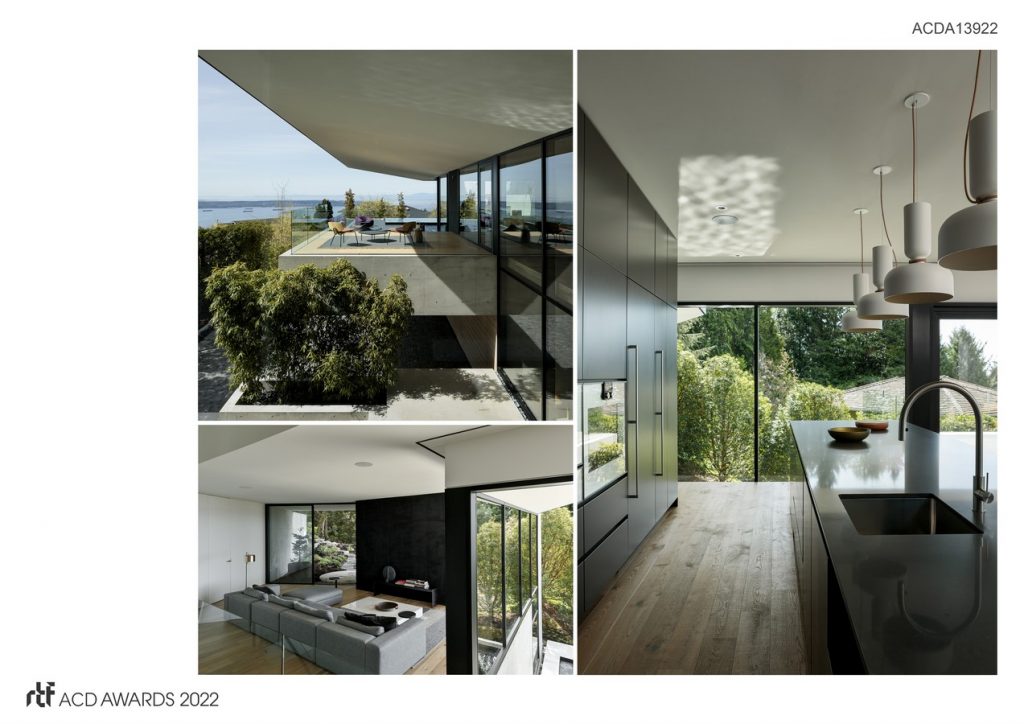
©Ema Peter
The program at the main and upper floor is stretched along the the length of the site, in parallel with the expansive east-flanking outdoor spaces which allow indoors spaces to expand outward. Front to back, the house steps out of its own way in a sequence of “views behind view” that creates an unfolding cinematic experience when moving between spaces.
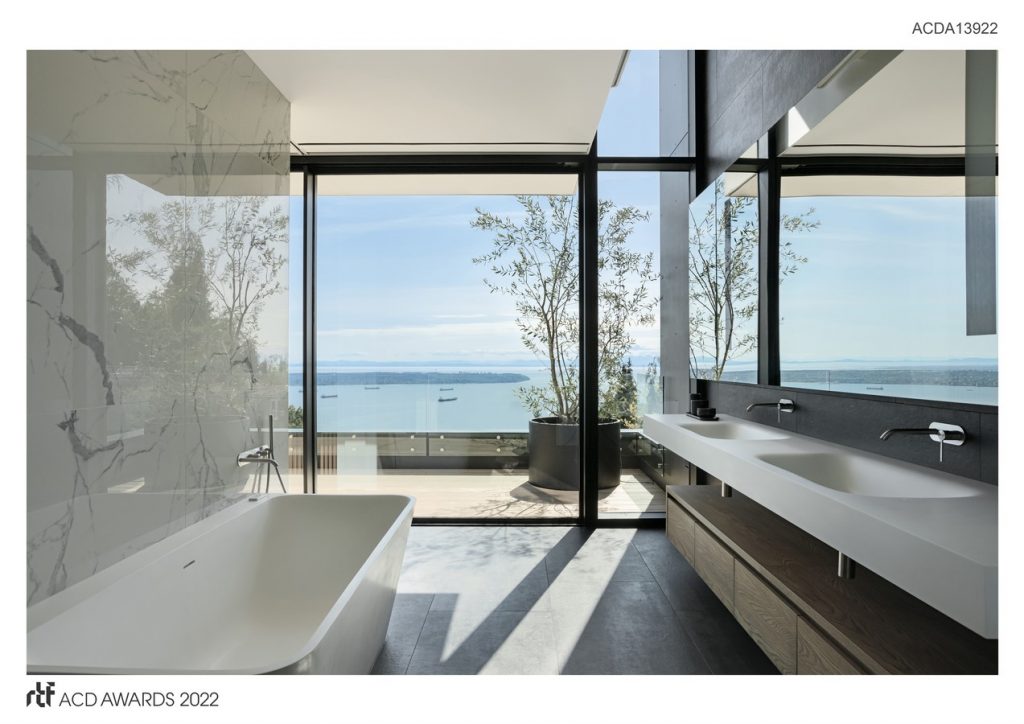
©Ema Peter
The design strategy results in an unconventional street-level elevation that—due to the low angle of view on the approach—largely suppresses the conventional reading of walls, floors, and windows. The house is primarily viewed as a pair of floating planes. Between these eaves, an enhanced visual field is established that can be enjoyed inside and out, drawing the eye beyond the immediate neighbourhood.
- ©Ema Peter
- ©Ema Peter
- ©Ema Peter
